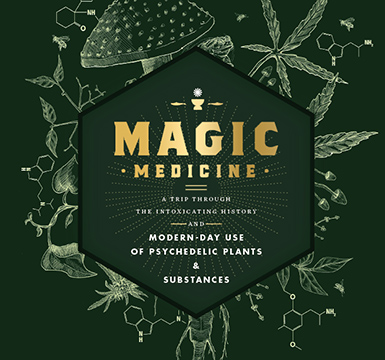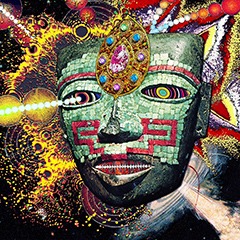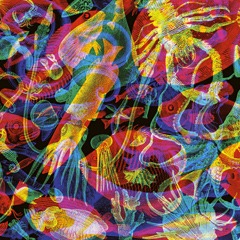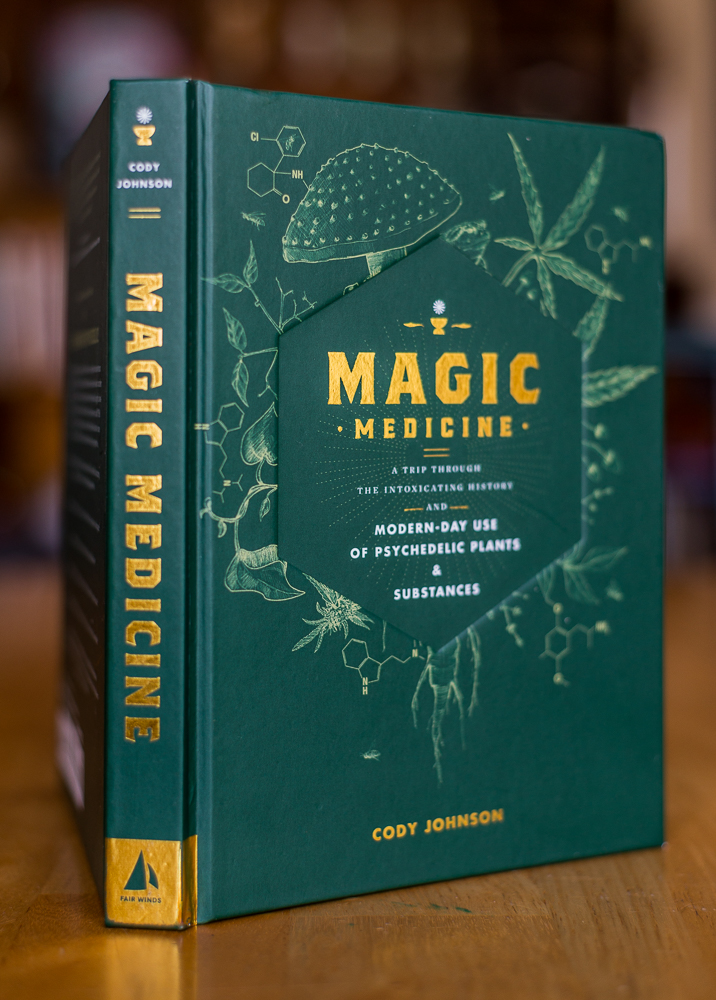Life Versus Entropy Tripping on Fractals, God, and the Mystery of Existence
by Psychedelic Frontier on Apr 21, 2014 3 CommentsSetting: Early morning at a lakeside cabin in the woods of Vermont.
Chemical lens: 25I-NBOMe, a research chemical with effects resembling LSD. (25I-NBOMe is a very new chemical, its safety profile is largely unknown, and lethal overdoses have been reported. Consuming 25I-NBOMe or other research chemicals is risky and I do not recommend it.)
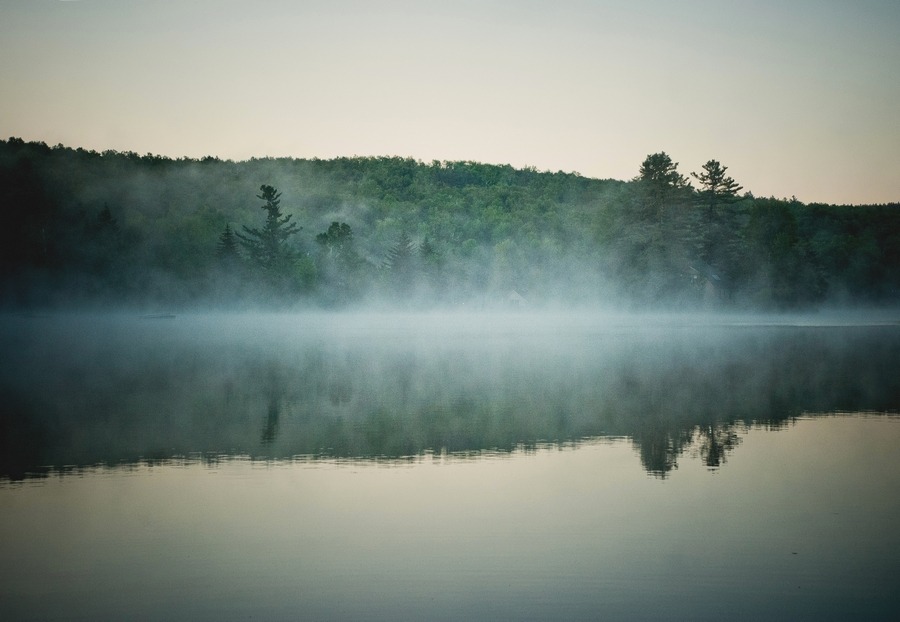
Fog rolls across the lake at dawn. The silence is broken by the chatter of birds and my own footsteps.
Everywhere I see cobwebs skewered by the first spears of sunlight. My eyes are open to the jewelry box of nature.
I spot a spider web suspended between the branches of a pine. The morning light shines through it, lighting up the dewdrops like pearls on a necklace. I look around, and everywhere I see cobwebs skewered by the first bright spears of sunlight. Now that one has appeared to me, the rest are unmistakable — stretched across the trees and under the porch railings, webs everywhere, all scintillating. My eyes are open to the jewelry box of nature.
[pullquoteleft]Each cell reflects a billion galaxies; each molecule contains the DNA of the universe.[/pullquoteleft]I am reminded of the old Hindu image of Indra’s net — a web of infinite dimensions, containing a glittering jewel at every vertex. Each jewel is said to reflect all the others, down to the last shimmering detail. And in each reflected jewel, the entire system is again captured and reflected perfectly. Peer as closely as you want at reflections within reflections, and sure enough the entire net appears, recurring endlessly. Indra’s Net may be the world’s oldest fractal, appearing several millennia before the term fractal was coined by Western scholars.
In Hindu and Buddhist philosophy, Indra’s net is an analogy for the world, illustrating the intimate interdependence of its billions of parts. Earth and space, man and nature, atoms and stars — everything depends on its context for meaning. What is one droplet removed from the ocean? And what is an ocean but a collection of droplets? Without the universe — the whole bejeweled tapestry — not a single atom would exist.
I’m in the net, woven into the tapestry of the cosmos and reflected throughout it a thousand million times.
Indian philosophers have meditated upon this interconnected reality for thousands of years. Now it seems like more than an archaic metaphor. I’m in the net, woven into the tapestry of the cosmos and reflected throughout it a thousand million times. I feel myself suspended in the loose, forgiving fibers of the net that grounds all things.
And here it is, right in front of me. Indra’s net hangs between two wooden posts, a spider’s web dotted with dewdrops. Each one reflecting, reflecting, reflecting through space and time, ephemeral and yet eternal.
But where is the spider?
![]()
My attention is captured by a maple tree in the early sunlight. Light streams through a dew-flecked leaf, illuminating the network of veins within. Like a dam, the leaf holds back the rush of sunlight, collecting it in deep pools before spilling over in a rush of gold and green. It shudders in a gentle breeze, glowing as though it might burst into flame. I marvel at its symmetry, its jagged edges, the seemingly never-ending system of arteries transporting carbohydrates from this food factory to the rest of the tree.
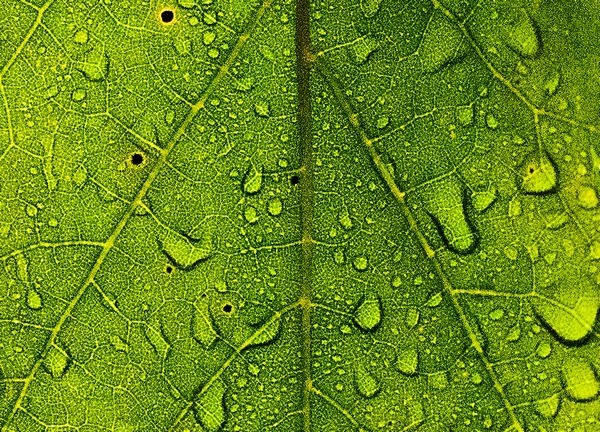
Close up. You don’t have to be high to appreciate the wonder of nature. But it helps.
The surface is a map — no, a landscape in its own right, criss-crossed with rivers and roads, the interconnections so tiny I must lean close to see them all. It’s a lush farmland, viewed from above: green fields neatly divided into rows and columns. Or it’s suburbia, with quiet neighborhoods tucked between busy highways, never too far from the nearest city. I think I can see my house from here.
The leaf repeats the structure of the tree itself: sturdy central trunk, branches to the sides, smaller offshoots extending in all directions. Tinier yet, a network of cells invisible to the naked eye. And this whole network is imprinted on every leaf — each one a unique variation, a limited edition! With eyes squinted and nose practically touching the leaf, my head swims with patterns within patterns.
![]()
I look at the palm of my hand. At first it looks clean and young, but as I pay closer attention to the countless folds and wrinkles, it appears wizened beyond its years. For the first time I behold every tiny line across my palm, absorbing its exquisite detail. Like a river delta, every tributary connects to yet smaller streams. I flip my hand over and look at the back. Rather than haphazard, the marks look linear, intentional, geometric — much like the spider webs or the structure of the maple leaf. The spindly lines connecting every pore would not look out of place in a graph theory textbook. I bring my hand closer and turn it to the light. The wrinkles appear to exhibit self-similarity at every scale.
[pullquotecenter]Some anti-entropic force has wrought the constellations on my palm, along with the rest of me. I do not know its name, but the depths of my fascination and gratitude for it are great.[/pullquotecenter]
Who graphed these geometric forms with such precision across my skin? God? I know it was whatever force grappled with entropy and won, bringing us all into being in spite of the universe’s love of decay and chaos. Whether we call it God or Happenstance or Abiogenesis (combined with millennia of evolution), some anti-entropic force is at work. It has wrought the constellations on my palm, along with the rest of me. I do not know its name, but the depths of my fascination and gratitude for it are great.
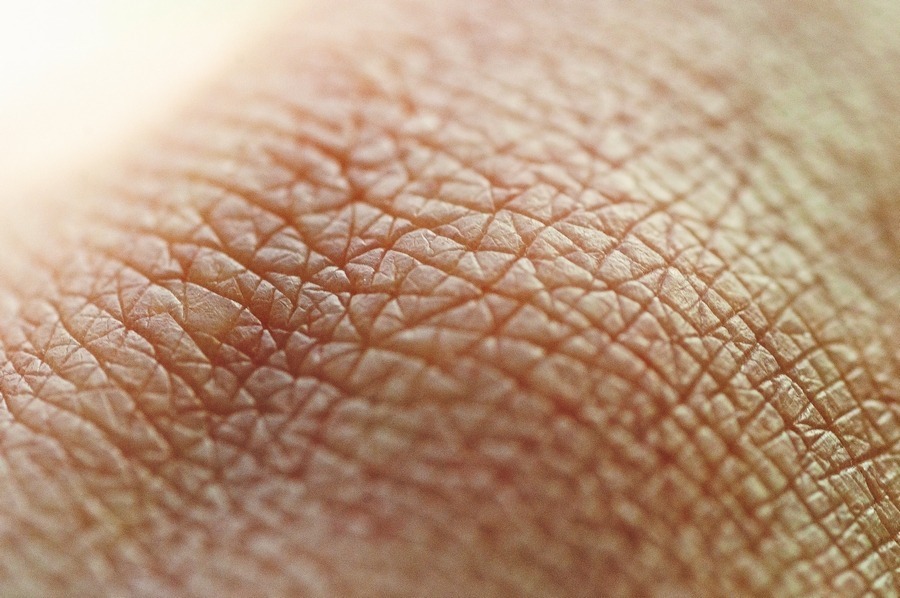
Close-up of my knuckle. The pattern shifts from triangles and hexagons on the left to more rectangular shapes on the right.
Organisms somehow emerged in a world where chaos reigns. How could inanimate matter give birth to life as we know it?
The name scientists give to this process, abiogenesis, comes from the Latin: creation of life from the non-living. This idea — that random collisions of particles create amino acids, which give rise to unicellular microbes, which evolve into more complex life forms over time — strikes me, as it does most people, as absurd. Astronomer Edward Harrison captured the absurdity in plain language: “Hydrogen is a light, odorless gas, which, given enough time, turns into people.” This flies in the face of one of our most deeply held assumptions: that organized systems must be built with intention.
This intuition is the crux of Albert Paley’s famous “Watchmaker argument” in support of the existence of God, and has been used more recently to defend “intelligent design.” Randomness, we think, can never create anything of real substance. No DNA strands, no cells, no organs, and certainly no humans are built by chance. We may comprehend the notion of abiogenesis abstractly, as a logical argument, but it does not connect with us. A story of divine creation is just the opposite: compelling and personal, but lacking in evidence.
[pullquoteleft]We have more faith in the tendency of all things to fall apart. All around us entropy tugs at the neatly tied strings of the universe, a slow but constant unraveling.[/pullquoteleft]In spite of our own existence, we have little faith in the power of the universe to resist entropy and give birth to order. Our intuition is based on natural processes like erosion and fire, which seem bent on destruction. But what do we know? Our short lifespans give us scant experience with a game of dice lasting eons. We can only extrapolate from brief experiments and naïve calculations. Abiogenesis may seem unlikely in the extreme, but given a billion years even the unlikeliest scenarios can play out. Perhaps we owe our existence to one such series of chance encounters. But this is unsatisfying; are we really just spontaneous reactions in a cosmic crucible?
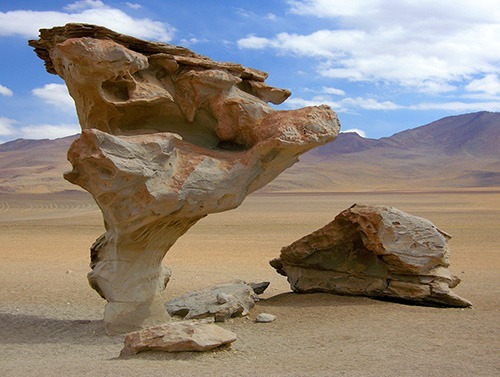
We understand that nature can carve a rock over time. But how can it build
DNA, or brain cells, or giraffes from scratch? (Photo by El Guanche)
We have more faith in the familiar, in the tendency of all things to fall apart without conscious intervention. All around us entropy tugs at the neatly tied strings of the universe, a slow but constant unraveling. Rain and wind assail an outcropping of rock until it falls into the river below, dissolving slowly in the current and dispersing to faraway shores. A house left unattended is reclaimed by the elements, collapsing and rotting to dust in a matter of years. A cracked egg can never be unbroken. Food spoils, flowers wilt, and people get old and die.
[pullquotecenter]Our very existence strikes against the prevailing winds of dispersion and disorder. What a lottery we have won, just to be, when our intuition suggests that we should not be.[/pullquotecenter]
Energy is dispersed and systems become less organized; this is the rule of the universe. Meaning, structure, and energy dissipate until there remains only chaos — a homogeneous, distributed chaos which is, for our purposes, the same as nothingness.
How remarkable, then, that our bodies, these carefully tuned networks of resources and information, have come to exist, and that the bewildering phenomenon of consciousness has been concentrated in them like the electrical charge in batteries. Our very existence strikes against the prevailing winds of dispersion and disorder. What a lottery we have won, just to be, when our intuition suggests that we should not be. This hand I behold, like the leaves, the spider webs, and everything else around me whose intricate design indicates intention and organization, is nothing short of a miracle in this world of random collisions. This mind I use, the being that emerges from this complex body, is more miraculous still. How good it is to be alive!
Of what nature is our creator, this anti-entropic force?
![]()
I turn my attention to the planks of the cabin’s deck, still wet from the early rain. Within seconds of kneeling down on the greenish wood, I see black numbers and letters flying up the plank. They zip right under my nose in single columns, too fast to read, like the end credits of a sped-up film. The wood grain curls into itself, forming eddies and whorls that flow like river water, around and around in a mad dervish dance. It is hard not to give in to astonishment.

A galaxy? Or Indra’s net, bejewelled with countless stars?
[pullquoteleft]I fit right into the web of design — one tiny, self-aware jewel in Indra’s net.[/pullquoteleft]I look down over the railing at the lawn. The twigs and stones are arranged in perfect geometric formations, as though the property owners had prepared for my arrival by arranging every pebble in the driveway, every stick in the yard, into precise and beautiful formations. The dew-kissed ferns and grasses, too, exhibit this impossible regularity. I am not hallucinating — I see each individual thing in its correct place — but somehow I perceive patterns where my sober mind would find only chaos. In randomness I see purpose. I recognize that every speck has landed where it was meant to, and not a molecule is out of place.
Like twigs and pebbles and tiny furled fern leaves, I fit right into the web of design — one tiny, self-aware jewel in Indra’s net. Whether the design exists only in my head, a pattern projected outward or perceived inward, seems irrelevant. I am exactly where I belong.
Liked this post? Subscribe to my RSS feed to get much more!

